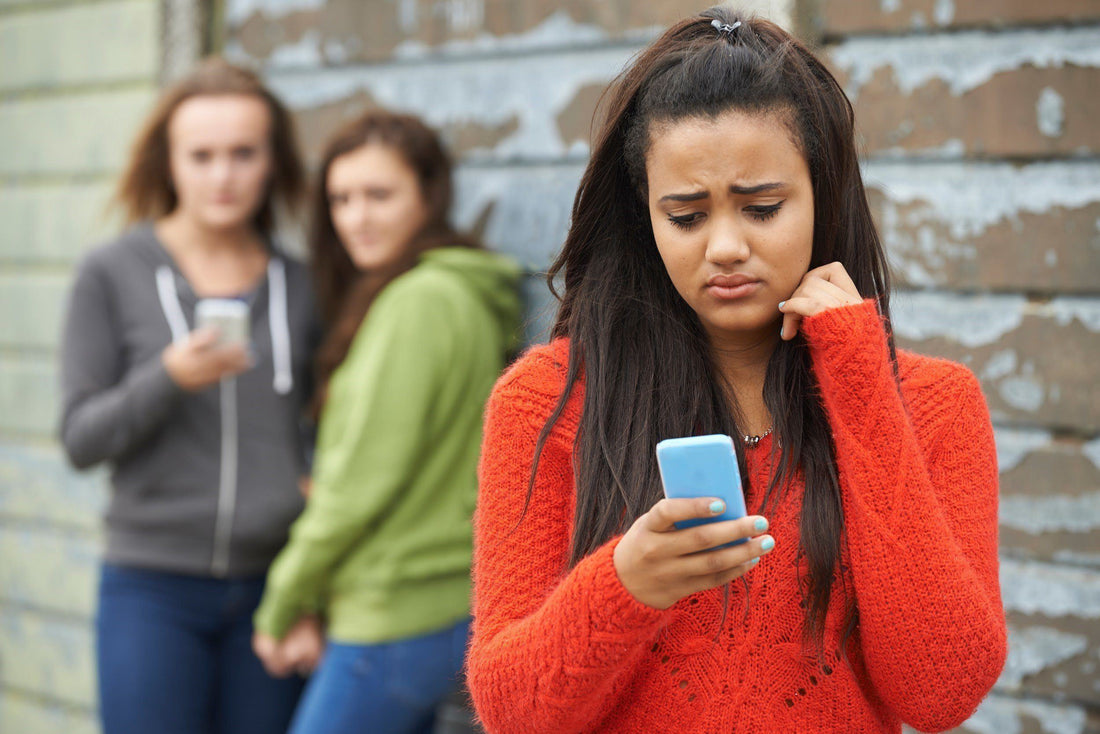Our children are living in an electronically driven world where the tools they need to function come courtesy of a smartphone, tablet or laptop device. These electronic devices are used for everything from working on school assignments to communicating with family and friends. Although beneficial, they open the door for cyberbullying to take place behind the scenes of your child’s online activity.
What Is Cyberbullying?
Anyone with access to the Internet and an electronic device can go online and post information about another person. Cyberbullying occurs when that information is mean-spirited, false or unkind about that person. A cyberbully will share these hurtful posts across text messages with peers, through instant messaging applications, in emails to peer groups or on social media. The intention of these posts is to humiliate, shame or embarrass someone who is conveniently excluded from the group of post recipients.
For a child who is the target of cyberbullying, anxious feelings can arise or become worse. Feelings of loneliness and isolation set in and the fear of additional humiliation take hold of the child, making any social setting unbearable. Seeing a bully in a social setting, such as a school lunchroom, can cause panic attacks to occur as the child feels there is no escape from the bully. When they go online, the bully is there. When they walk the hallway at school, the bully is there. Seemingly everywhere they turn, the bully is there, which keeps them in a state of constant anxiety.
The Connection Between Social Media and Cyberbullying
Social media is a popular way for children to communicate with their friends and share insight into their day. It is also an unknowing way to give a cyberbully the necessary ammunition to place a child under attack. Many of these cyberbullying attacks can take place anonymously through applications or social media sites that don’t require a user to create a profile before sharing a post. Other social media channels allow a user to make a post and have it remain visible for up to a minute before disappearing into cyberspace.
Having the ability to make anonymous or split-second posts that are mean-spirited or humiliating in nature to another person is an ideal situation for any cyberbully. That person can make an attack on social media and have it disappear before a parent or other adult of the intended target can be notified. They can also delete the social media account used in the attack, essentially removing any record of being present online in the first place. In the meantime, other users can screenshot a malicious post, share it with their social circle and allow that post to live online forever. For the child at the center of that attack, the humiliation and embarrassment never go away.
How to Stop Cyberbullying
For parents, just hearing the word “cyberbullying” strikes fear in their hearts. Parents want to do whatever possible to protect their child. A good place to start is knowing what the child is doing every time access to an electronic device is given. Take notice of actions such as a child hiding his screen from view, withdrawing from using social media or an electronic device or refusing to talk about his online interactions. Each can be a sign of a child being bullied or bullying someone else.
Shine Brighter
Discovering that a child is cyberbullying someone else isn’t cause for parents to panic. It may be coming as a result of peer pressure from another child or that child may be trying to get back at someone who’s bullying them. In that situation, the best course of action a parent can take is to talk to the child. Doing so helps reveal the reason behind the bullying acts and gives parents the chance to offer a solution to the situation. Asking the child how they would feel if embarrassing or humiliating things were being posted about her allows the child to have empathy for her victim, which makes those actions stop.
A child who is enduring cyberbullying needs to talk to a parent or other trusted adult once the online actions reach a point that makes the child feel anxious, nervous or fearful. As parents, we need to find out if the cyberbully is someone our child knows in real life. If that's the case, we need to reach out to their parents and make them aware of what's taking place online. If the parents are unwilling to discuss the situation with us, our next course of action is reaching out to the school administration or our local authorities for assistance in resolving the matter.
When the cyberbully isn't someone our child knows, our course of action depends on where the situation is taking place. For social media situations, we need to block that user from having any further contact with our child. We also need to report that user to the appropriate social media channel, which makes them aware of the situation and allows them to take the appropriate actions with that user. If the situation is occurring on a website such as a gaming site or chat room site, we can report the user in question to a website administrator.
Life online isn’t going away for our children and neither is cyberbullying. As parents, our best line of defense is to keep a watchful eye on their activity, help them practice mindfulness techniques when online and step in when we think bullying is taking place.







